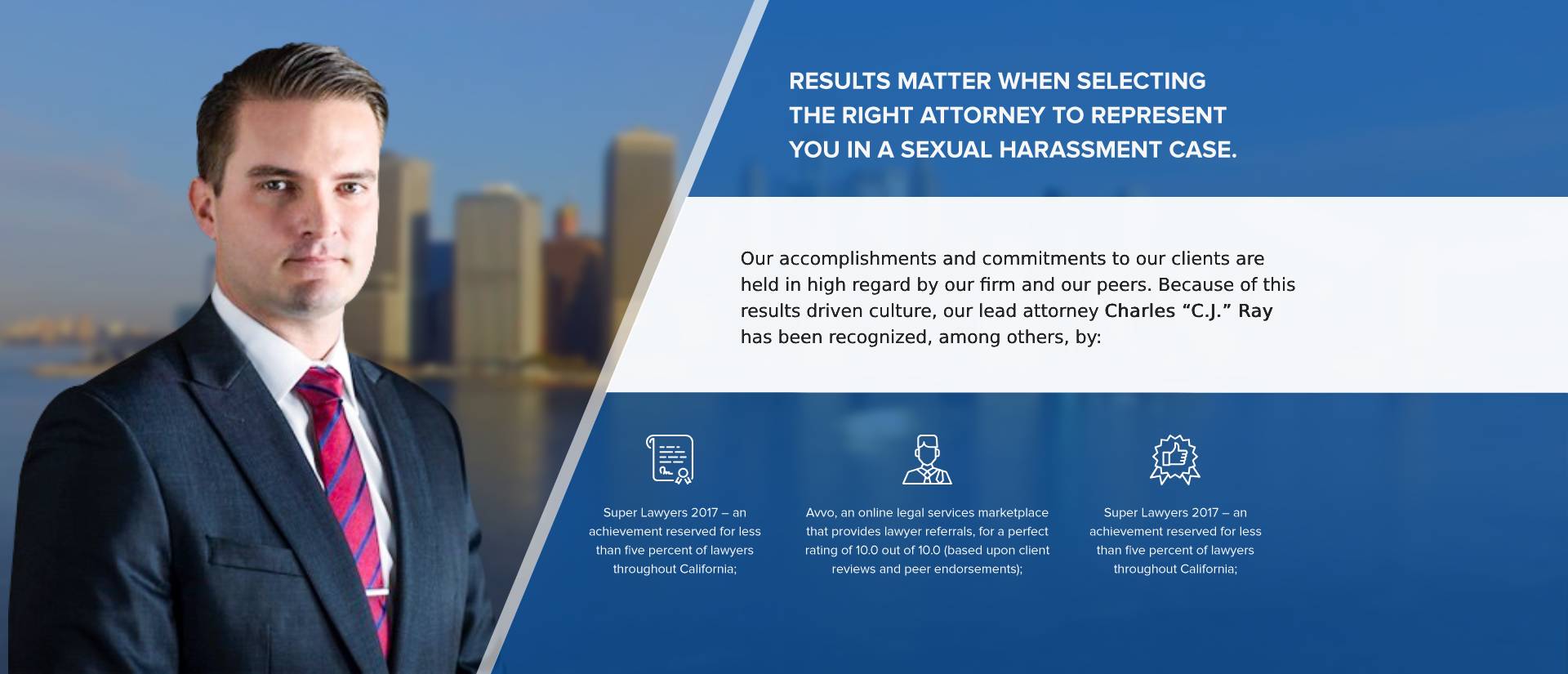Federal and state law prohibits teacher and professors from discriminating against students on a gender basis and engaging in sexual harassment in an educational setting or program. These laws are included in Title IX of the Education Amendments of 1972 (Title IX), and all private and public education institutions that are recipients of federal funding. The amendment seeks to protect students of any educational or academic schools, or at athletic and extracurricular activities or establishments.
Schools should provide a safe, non-discriminatory environment that is conducive to learning and helping students thrive. However, it is not unusual for predators to be drawn to careers that will provide them with the easiest access possible to their victims. That's why sexual harassment by faculty members is often a common issue in education institutions.
But what does sexual harassment by teachers and professors look like? In many cases, students, school staff, and parents do not understand the concept of sexual harassment, let alone how to put an end to it or what they can do to stop it from happening.
Most often, sexual harassment is an unwelcome or threatening approach that makes the target feel uncomfortable. Sometimes, it is sexual assault. Either way, school administrators face the difficult task of investigating the incident and finding a resolution that will protect the rights and safety of not only the target and alleged perpetrator, but of everyone on campus.
After the momentum of the #MeToo campaign, more people have opened up about sexual harassment. Seeing the widespread nature of the problem has not necessarily been a shocking revelation, but certainly disturbing. It is common in the workplace, but higher education institutions offer additional risk factors.
Sexual harassment is common in cases where predators (usually men) have a lot of clout, and victims (mostly women) tend to be disregarded. In many instances, victims fear that they will be judged or ridiculed, so they tend to keep quiet. In higher education settings, professors wield great power, compared to students or even junior colleagues. They are often revered in their fields, and a student's allegations that he or she experienced sexual harassment at the hand of a teacher or educator may not be believed at first.
Universities and other education institutions would prefer to avoid lengthy hearings and lawsuits that come with dismissing a tenured professor.
Legal Standards for Sexual Harassment by Teachers or Professors
According to the Equal Employment Opportunity Commission, most anti-sexual harassment policies focus on avoiding legal liability, which makes it ineffective.
While legal standards define sexual harassment as behavior that is so severe or frequent that it results in creating a hostile environment or that it results in demotion, much of the unwanted inappropriate behavior falls well below that threshold. Most higher learning institutions encourage professors to build strong relationships with their students, but familiarity can cause someone to develop romantic feelings for the other person.
Sexual harassment and sensitivity training should cover the unwanted behaviors in order to increase people's awareness of actions that are considered inappropriate or may be misconstrued.
Sexual harassment is typically defined as any conduct that is:
- sexually motivated;
- unwelcome;
- limits or denies a student from benefiting from or participating in a school's programs or activities.
There are different forms of harassment, and it is typically carried out by fellow students, educators, school employees, or third parties who are not employed by the school, such as visiting speakers, a sports coach from a different school, or someone who is making a delivery to the school. Both female and male students may fall victim to sexual harassment, which may be physical, verbal or non-verbal in nature, and perpetrated by male or female and same-sex predators.
Sexual harassment can be linked to an education institution even if it did not take place on the school grounds. In fact, many of the incidents take place:
- on school buses
- at school-sponsored field trips
- at off-campus training programs.
School administrators have to apply common sense and judgment in assessing whether sexual harassment took place and in determining the appropriate response.
Examples of Teacher / Professor Sexual Harassment
A predatory teacher/ professor can act inappropriately towards a student in various ways. Most often, their actions will make students feel uncomfortable or victimized. Some common forms of sexual harassment that teachers or professors may commit against students or colleagues, include:
- telling dirty or sexual jokes,
- rating students according to sexual performance or activity,
- showing or circulating websites or emails with sexual undertones,
- distributing or displaying sexually explicit drawings, written materials or pictures,
- spreading sexual rumors,
- making sexual propositions,
- pressuring students to grant sexual favors,
- or touching someone sexually.
Not all physical contact is considered sexual in nature, unless it has sexual connotations. If a teacher or instructor hugs a student to congratulate him or her for something, it is typically not considered sexual harassment unless the student considers it unwelcome, or if the circumstances are inappropriate, it is often considered sexual harassment.
Criminal sexual conduct includes sexually motivated stalking, dating violence, sexual assault, or rape. Title IX states that the school will not be relieved of its responsibilities by simply reporting the alleged sexual misconduct to law enforcement.
Although sexual conduct has to be considered unwelcome in order for it to be viewed as sexual harassment, various circumstances are assessed, including a student's age, the type of conduct and whether the student was physically and mentally capable of welcoming such conduct. A student's failure to complain, or his or her submission does not necessarily mean that the behavior was welcomed.
Sometimes, school employees, teachers or professors can engage in conduct that limits a student's access to opportunities or activities, or participation in a school's program. The educator will typically base a positive educational decision or school benefit on the student's submission to engage in unwelcome sexual conduct. This type of sexual harassment can result in a hostile learning environment.
Responding to Teacher / Professor Sexual Harassment Claims
When one of your students, a parent or other responsible school employee reports an incident of harassment, or if it is observed by a school employee, the school should provide the victim (or the parent, for younger students) of the school's responsibilities and options for informal or formal action.
Schools must conduct prompt and impartial investigations right away to determine how events unfolded and resolve the situation by taking the appropriate actions, regardless of whether the victim filed a formal complaint.
If the event that a victim requests confidentiality, the school is required to take all reasonable actions to respond confidentially to the complaint. If the student refuses for her (or his) name to be disclosed to the alleged harasser, the school's ability to respond adequately may be limited.
While performing the investigation, the school must take the appropriate actions to create a safe environment while the investigation is conducted. This may include separating the victim and the perpetrator. On completion of the investigation, it is the school's responsibility to notify the victim (or parents) of the outcome, and punishments that directly relate to the victim in question, such as protection orders. Punishment is aimed to avoid harassment from happening again and must be:
- age-appropriate
- prompt
- reasonable
- and effective.
If a school fails to apply the required punishment, it must provide a remedy that erases the effects of the harassment which could have been avoided through a prompt and effective response.
Universities have their own disciplinary procedures, however, they are limited in terms of the punishment they are able to mete out. Statutes of limitations tend to be short, and they would require high-standard evidence and faculty led hearings to reach conclusions. In most instances, such proceedings tend to be lengthy and precarious.
It is difficult to remove any professor from campus, even in spite of regular claims of misconduct. Faculty peers are often tasked with assessing a colleague's actions and tend to view allegations as a threat on tenure. When a student files a complaint, they instantly have the odds stacked against them, especially in borderline or fringe allegations, as the university will naturally give the professor the benefit of the doubt.
Often, the faculty committee will recommend a suitable punishment for the professor, while the president of the institution will make the final decision. In most cases, accused professors are offered a voluntary severance agreement, which gives them the opportunity to resign. They are also often assisted in finding a different job.
The student who complained will usually be offered a small gesture of appeasement. Additionally, they will be required to sign a non-disclosure agreement. With very little resolution, students are left dissatisfied and vulnerable, because sexual harassment has the power to derail a future.
Title IX provides protection for students of all sexes against harassment from fellow students, school employees or other third parties connected to the institution.
Teacher or Professor Sexual Harassment: When to Find an Attorney
Civil Code 51.9 of the California sexual harassment law grants people the right to file a claim for personal injury, loss or disadvantage suffered because of harassment. In professional-relationship sexual harassment lawsuits (which includes student-teacher relationships), personal injury includes emotional distress, as well as violation of statutory rights. Many constitutional rights are at play in these cases, including freedom from gender-based discrimination.
It is illegal for a teachers or professors to commit sexual harassment against their students. Title IX prohibits educators from making unwelcome sexual advances or sexual requests of their students or engaging in physical or verbal conduct that causes an offensive or hostile educational environment. An educator may not use a student's submission to sexual conduct as a basis or condition for educational decisions.
Title IX requires that schools take certain actions to protect students from sexual harassment by teachers or professors, and inform students of the steps they need to take if it occurs.
A notice of discrimination must be disseminated right away, and it must be widely distributed. Schools must also designate a coordinator who can manage Title IX compliance. The school's nondiscrimination notice must contain the coordinator's contact information.
Schools must also publish their grievance procedure that illustrates:
- the complaint
- the investigation procedure
- the disciplinary process that follows a complaint.
If a school shows negligence in providing a satisfactory outcome or fails to investigate a sexual harassment claim against an educator, victims may talk to a specialist sexual harassment lawyer about their case. A plaintiff has to prove a number of factors in order to bring a Title IX claim, including:
- The plaintiff suffered pervasive, severe and offensive harassment, which deprived him or her of access to benefits and educational opportunities offered by the school.
- The school had substantial control over the harasser, and also over the context of the incident;
- The school had been notified of the harassment.
- or, the school acted with deliberate indifference, or was unreasonable based on the circumstances.
- The deliberate indifference showed by the school caused the plaintiff to be vulnerable to harassment.
When you become the victim of sexual harassment at school or on the campus, be sure to document all instances of discrimination or abuse. Be sure to save copies of any emails or documents that may be considered evidence. If other students have had a similar experience, speak to them discreetly and find out whether they may wish to file a joint case.
File a sexual harassment complaint with the relevant authorities and be sure to keep a record of the proceedings including any retaliatory actions that were taken against you after filing the complaint.
Sexual harassment committed by a teacher or professor is different from workplace harassment in the sense that you don't have to first file a sexual harassment complaint with the Department of Fair Employment and Housing. You may contact a sexual harassment lawyer right away.
California Sexual Harassment Attorney can help fight for your rights if you have been or are harassed by a teacher or professor. In addition to explaining the legal options available in your case, our experienced attorneys will serve as strong advocates who will aim to help you reach the most favorable outcomes while avoiding costly or extensive litigation, if at all possible.
Call 800-905-1856 today to schedule a case analysis with our Sexual Harassment Lawyer.



